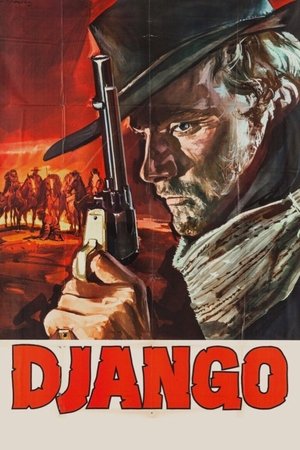
Django
***Cult Spaghetti Western with Django dragging his coffin*** A mysterious stranger dragging a coffin (Franco Nero) saves a prostitute named Maria (Loredana Nusciak) and waltzes into a neutral border town that services both a private militia of ex-Rebels led by Major Jackson (Eduardo Fajardo) and a small army of Mexican revolutionaries, led by General Hugo (José Bódalo). Meanwhile there’s gold to be had. Released in 1966, “Django” (pronounced JANG-oh) is a cult Euro Western highlighted by its star and the typical cartoonish flourishes of the genre. Franco Nero and his Spaghetti Western lookalike, Terence Hill, represented the Euro-version of Clint Eastwood. To be expected, the characters are cardboard caricatures and there’s a lot of brutal violence that’s so sadistic and overdone it’s comical. For instance, 15 men are dead by the 20 minute mark with 40 more shortly later in a machine gun bloodbath. A mere half hour later there’s a second machine gun assault lacking any artistic finesse whatsoever. It has to be seen to be believed and bespeaks of moviemaking for 13 year-olds. Considering what’s in Django’s coffin, the way he drags it around isn’t practical for more than 100 yards. The manner he awkwardly slogs it about is especially incredulous during the gold theft sequence where, curiously, no one sees or hears him. _Why Sure!_ When do these events take place? The death date on Mercedes Zaro’s tombstone says 1889, which is substantiated by the use of the standard lever-action rifles and Django’s quasi-Maxim machine gun, pointing to no earlier than 1884. Tarantino took elements of “Django” and other Spag Westerns to forge the outstanding “Django Unchained” (2012), which makes “Django” & most Euro Westerns of the 60s and early 70s pale by comparison. The title song by Luis Bacalov is good though and Nusciak is striking in an icy way. The film runs 1 hour, 31 minutes (with censored versions running 3-4 minutes less) and was shot in Madrid, Spain, and Lazio, Italy. GRADE: C
